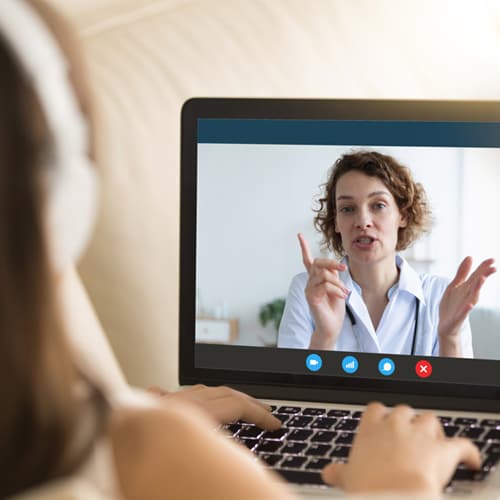The COVID-19 crisis has closed dental practices all over the country. However, many Americans will still have questions or concerns about their oral health. With your patients looking to you for leadership and guidance during this challenging time, how can you provide the most appropriate oral health care?.
Communication in the age of COVID-19
While your office is closed, patients will refer to your website and social media channels for information in the first instance. In addition to giving your patients regular updates, you can use these platforms to provide:
- Answers to common oral health questions.
- Self-care advice for non-urgent oral health concerns.
- Guidance for urgent or emergency dental care.
Some of your patients may have been awaiting or undergoing non-urgent treatment when the COVID-19 pandemic began. Understandably, they may be anxious or concerned about the implications of office closures for their treatment. Pro-actively reaching out to patients by telephone can help alleviate their concerns. This is a good opportunity to offer reassurance, answer any questions, and provide self-care advice or further care where necessary.
Teledentistry
Teledentistry is a valuable tool in providing continuity of care for your patients, while avoiding physical contact and minimizing the potential spread of COVID-19. Examples of how you may use teledentistry include:
- Live video calls or phone calls to conduct problem-focused evaluations and triage urgent or emergency cases
- Transmission of photos, videos or other digital files to support examination, diagnosis and treatment planning.
The Department of Health and Human Services Office for Civil Rights lists the following secure services as suitable for HIPAA-compliant teledentistry:
- Skype for Business
- Microsoft Teams
- Updox
- VSee
- Zoom for Healthcare
- Doxy.me
- Google G Suite Hangouts Meet
- Cisco Webex Meetings
- Webex Teams
- Amazon Chime
- GoToMeeting
- Spruce Health Care Messenger.
The Office for Civil Rights has also stated that, under the current circumstances, it will not penalize dental practitioners for using video services such as Facebook Messenger and Apple FaceTime to provide good-faith teledentistry services. However, public-facing services like TikTok, Twitch and Facebook Live should not be used.
The American Dental Association (ADA) adds that principles such as informed treatment and documentation must still be observed when providing teledentistry. The ADA is continually updating its teledentistry policy as the pandemic unfolds. To maintain best practices, stay informed on the latest developments and ADA recommendations here.
Remote prescribing
Oral health may not be top of mind during the stress of the pandemic, so your at-risk patients may benefit from reminders about managing their oral health. If you practice in a location where remote prescribing is permitted, teledentistry means that you can still recommend and prescribe products for your patients while they are at home. For example, your patients at high risk for caries will still benefit from a prescription fluoride toothpaste, such as Colgate Prevident.
This is undoubtedly a challenging time for both dental practitioners and patients. By leading with clear, pro-active communication now, you can help your patients with their current oral health care needs and can also set the foundation for a smoother return to in-person practice later.


Was this article helpful?
If you’d like a response, Contact Us.